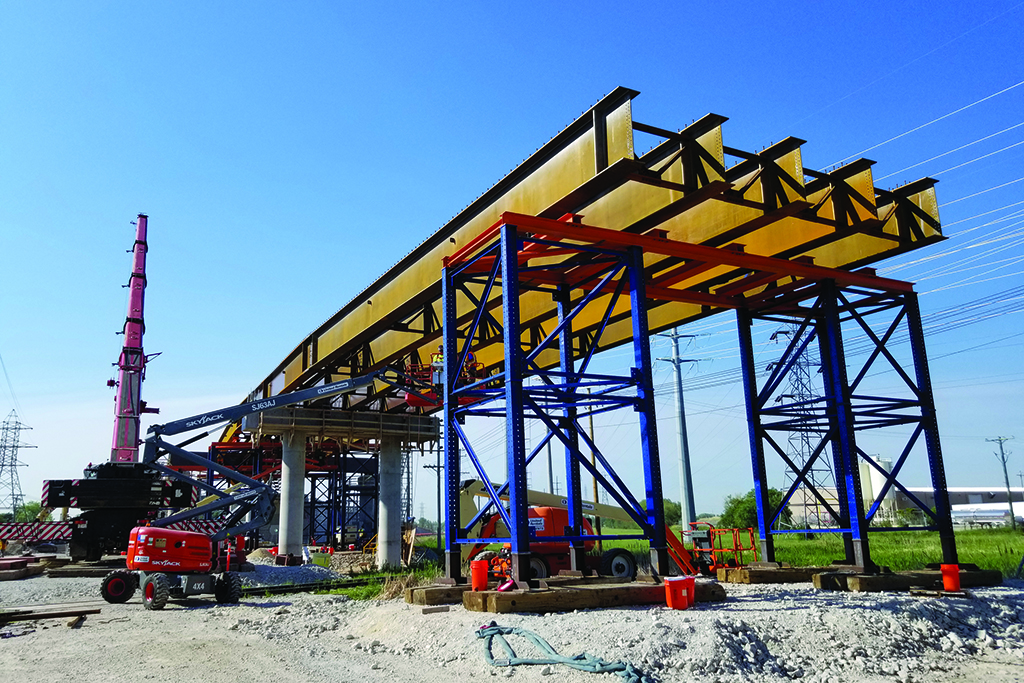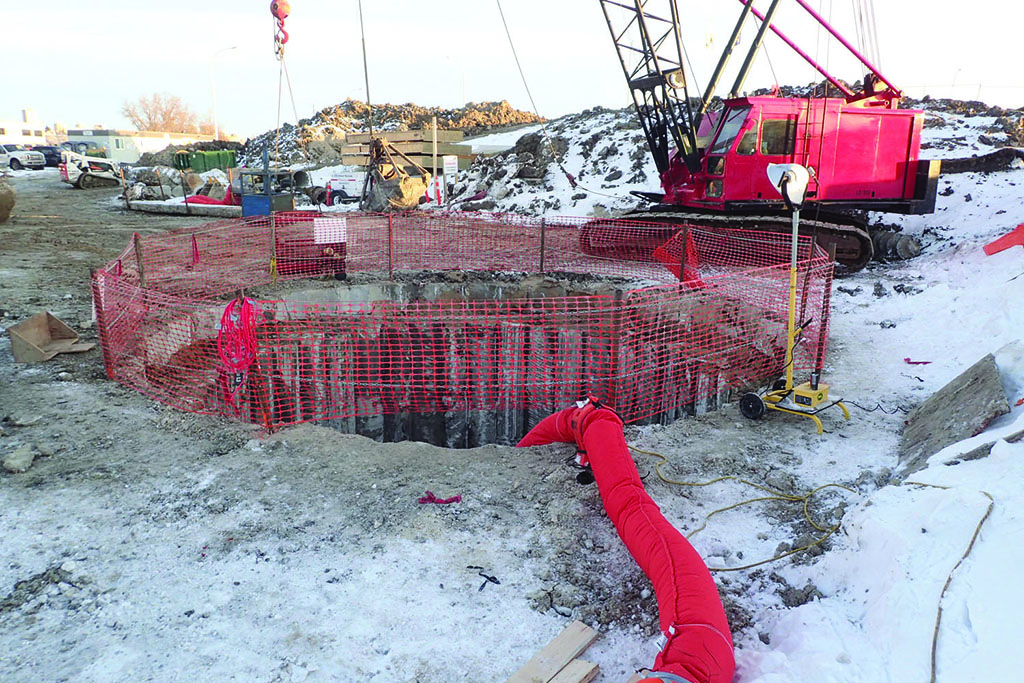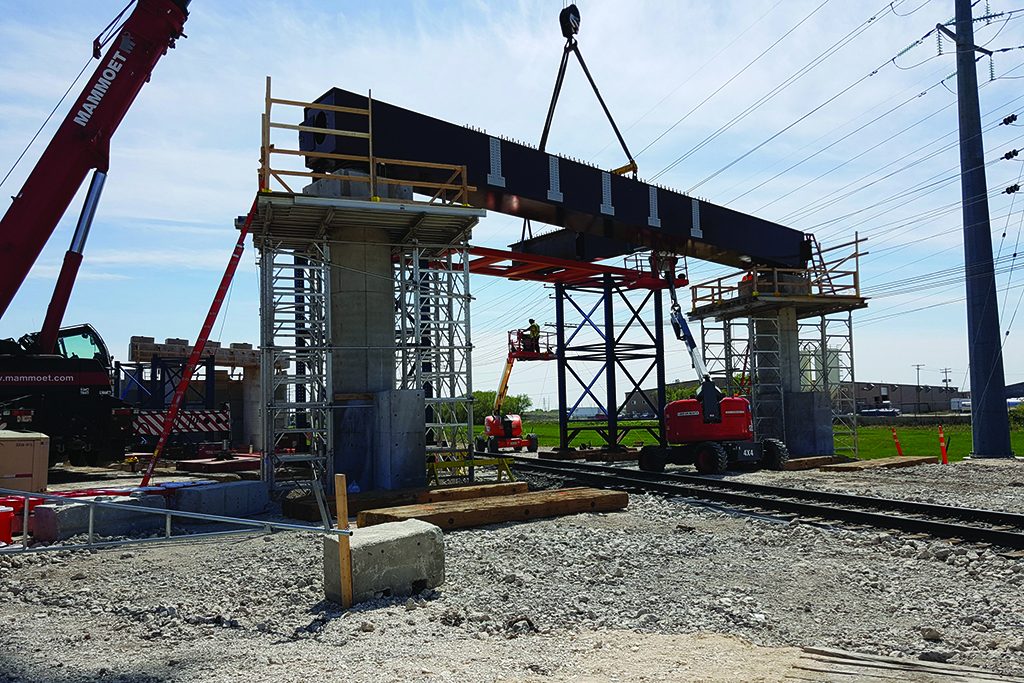There is still a lot of grafting ahead, but work crews and trades are expected to wrap up construction on the final leg, or phase two, of the massive $467.3-million Southwest Transitway link in Winnipeg by next spring.
The 7.6-kilometre high-speed dedicated busway corridor that is physically separated from the regular street system will complete the connection between downtown Winnipeg and the southwest quadrant of the city.
“Construction is progressing on schedule and in the final stages,” said Jesse Crowder, senior projects engineer with the City of Winnipeg who is overseeing the venture. “The transitway is set to open to the public in April 2020.”
Work on phase two began in fall 2016 and is well over the halfway mark with many overpass structures finished.
Phase one of the transitway, which runs southwest from Queen Elizabeth Way in downtown Winnipeg to the Pembina Highway at Jubilee Avenue, was completed and put into service in 2012. Phase two is an extension of the existing transitway southwards from the Jubilee interchange to the University of Manitoba and Investors Group (IG) Field as well as residential neighbourhoods.
In addition to building the transitway, which is primarily one lane in each direction, there will be eight transit stations that have been designed to have the same look and feel as existing stations, associated Park and Ride and Kiss and Ride parking lots and active transportation paths running parallel to the transitway.
The Pembina Highway underpass is also being improved and expanded to benefit drivers, transit users, cyclists and pedestrians. Work on that part of the project is expected to be completed by fall. The highway is also being widened to three lanes in each direction from Stafford to Point Road to improve traffic flow and new active transportation pathways are being constructed on both sides of the underpass.
Other work has included building two transitway overpasses and two transitway bridges and one underpass, one rail bridge and one pedestrian bridge as well as related items for each structure, including retaining wall structures and pump stations. There are also grade separations crossing CN’s main rail line as well as sewer replacements. A special station is being included at IG Field for stadium events.
Many of the building structures are nearing completion, said Crowder, as is the transitway roadway itself. Remaining work includes landscaping, station furnishings and connections to the existing street network.
Development of a rapid transit system is a key component of the city’s plan to provide citizens with a viable alternative to automobiles. The population of the southwest area of Winnipeg is expected to grow by 40 per cent by 2030, so the transitway is essential to help moderate traffic demand on the roadway network and to improve the overall performance of the transportation system, said Crowder.
“Once completed, the project will allow for transportation options (such as buses, active transportation, cars and trucks) to operate in a more sustainable and integrated manner,” he said.
A significant challenge on the project, said Crowder, was the component work adjacent to IG Field at the university.
“That component required the portion of the transitway between Pembina Highway and IG Field as well as the pedestrian bridge structure and event terminal to be completed prior to the 2017 Canada Summer Games,” he said. “Construction only began in August 2016 but our team was able to meet the objective and have the facility ready for the Games.”
With such a long corridor, there have also been a lot of different worksites going at the same time and many different activities underway, which has required a lot of co-ordination and scheduling by managers.
Some of the work has also been done overnight to minimize the impact on the public, in particular on the Pembina Highway underpass and the transit station at IG Field.
Phase two is expected to come in about $120 million below its originally-anticipated price tag of $587 million thanks to innovations developed by Plenary Roads Winnipeg that drove cost savings.
“The substantial cost savings were realized through the refinement of the final design and a competitive P3 bidding process that allowed for project innovations and lower construction costs,” explained Crowder.
The project, meanwhile, caught a break due to a perfect storm of financial and construction conditions, he noted.
“The project was also advertised during very favourable market conditions that included lower interest rates and a reduction in the volume of work currently in the national market place.”

1/2
SUBMITTED PHOTO











Recent Comments
comments for this post are closed